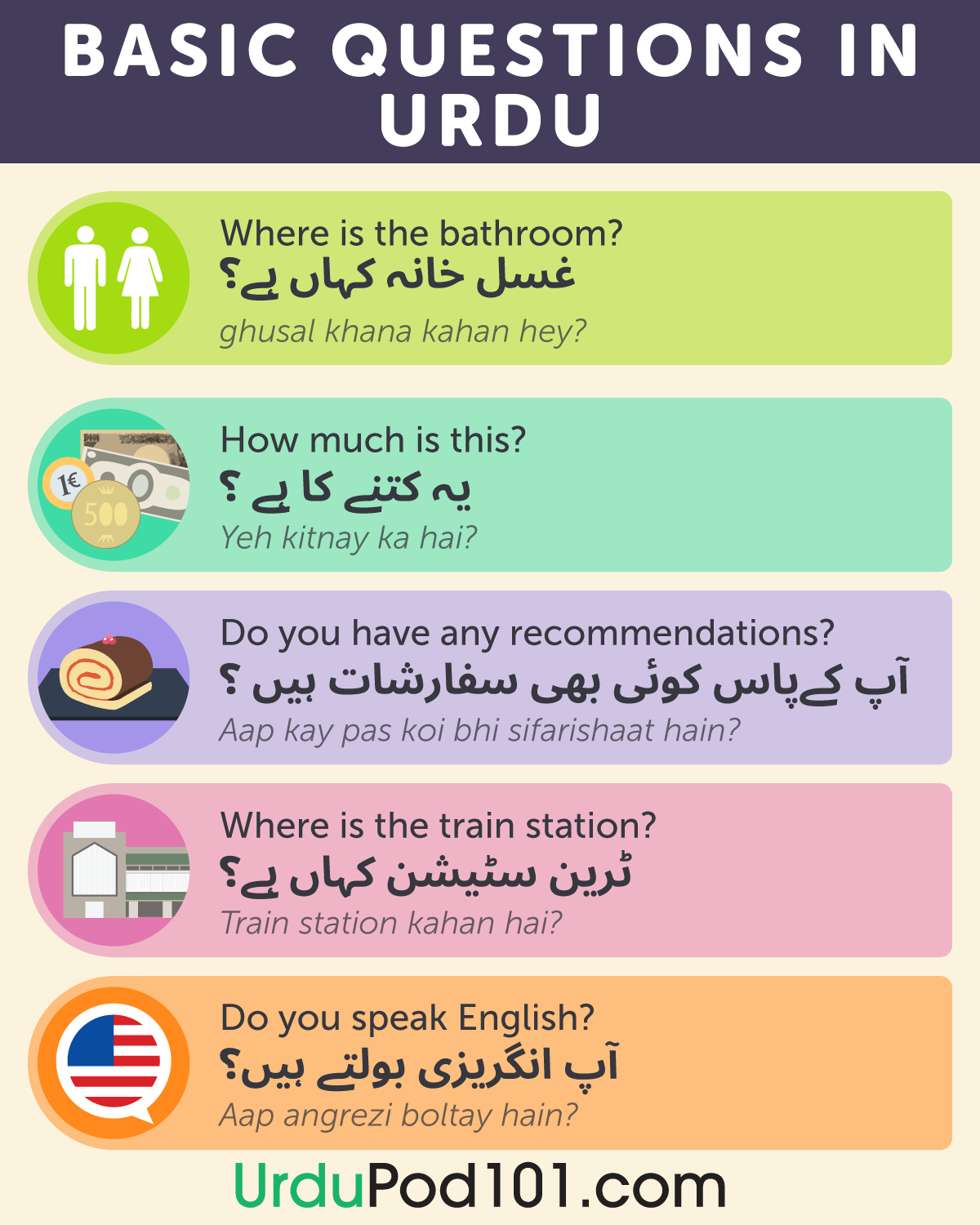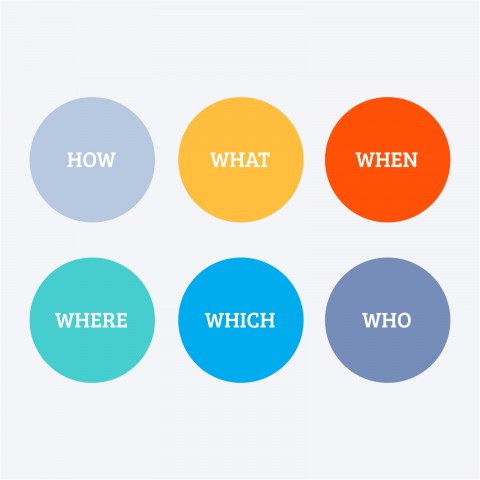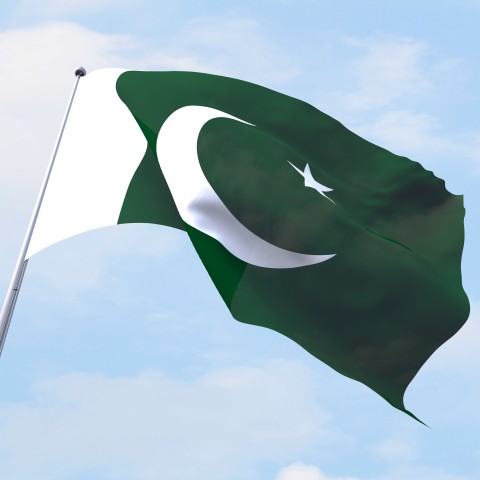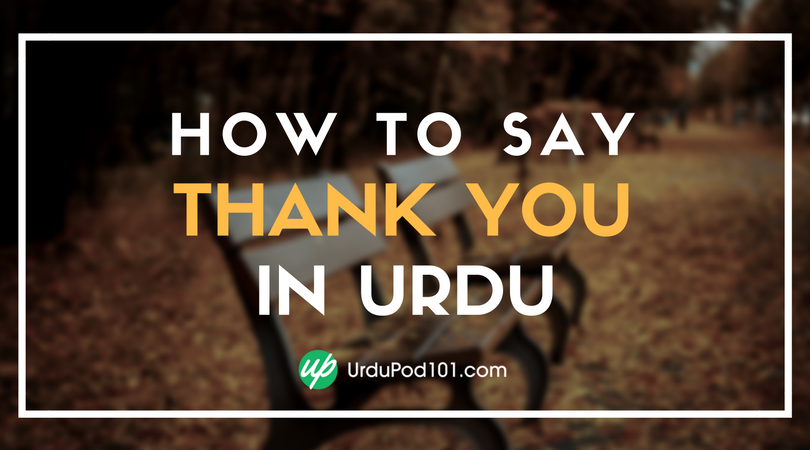
Learning the must-know pronouns in Urdu is essential because they substitute nouns to avoid unnecessary repetition and increase overall clarity in writing and speaking. As a non-native, being able to correctly use pronouns in Urdu conversations will allow you to sound more natural and reasonable.
In this article, we’ll teach you everything you need to know about this important grammar point. Let’s get started!
 Table of Contents
Table of Contents
- What is a Pronoun in Urdu?
- Urdu Personal Pronouns
- Urdu Demonstrative Pronouns
- Urdu Interrogative Pronouns
- Urdu Indefinite Pronouns
- Urdu Relative Pronouns
- A Few Socio-Cultural Restraints
- Conclusion
1. What is a Pronoun in Urdu?
A pronoun is a word which can be used instead of a noun. In Urdu, a pronoun is called: اسم ضمیر (Ism-e-zameer). You may notice that the definition of a pronoun in Urdu, as well as its use, is the same as in English. If you struggle with the construction of Urdu pronouns and their appropriate uses, walk with us through this article and you’ll get a pronoun list in Urdu to get you started.
With this in mind, let’s have a look at the most popular kinds of pronouns in Urdu, starting with the personal pronoun.
2. Urdu Personal Pronouns

There are two words for Urdu personal pronouns: ذاتی اسم ضمیر (zaati ism-e-zameer) / شخصی اسم ضمیر (shakhsi ism-e-zameer). A pronoun which is used to replace a proper noun, such as a person’s name, tends to be a personal pronoun. To illustrate the proper usage of personal pronouns in Urdu, we’ll discuss them one by one, according to their form in particular.
Initially, personal pronouns can be compartmentalized into three types:
- ضمیر متکلم (zameer mutkalam) — First-person
- ضمیر حاضر (zameer hazir) — Second-person
- غائب ضمیر (zameer ghaib) — Third-person
1. 1st-, 2nd-, 3rd-person singular: I, you, he, she, it
1- 1st-Person
To begin, let’s discuss the واحد متکلم (wahid mutkalam) singular first-person.
میں (mei) is the word that’s used for the first-person pronoun “I” in Urdu. Contrary to how this pronoun is used in English for both male and female speakers, in Urdu, the verb determines the gender of the pronoun. In order to represent a masculine pronoun, the phrase تا ہوں (ta hun) is used; to represent a feminine pronoun, the phrase تی ہوں (ti hun) is used. For example:
میں سکول جاتا ہوں۔
mei school jata hun.
I go to school.
میں کھانا کھاتی ہوں۔
mei khana khati hun.
I eat my meal.

In the above sentences, the first one refers to a masculine pronoun case and the second one a feminine pronoun case.
2- 2nd-Person
It’s important to keep in mind that there are two Urdu words for the second-person pronoun: تم (tum) and آپ (aap). Both of these words mean the same thing: “you.”
The former is used in an informal sense, whereas the latter is used in formal conversations. Being a non-native speaker, it’s recommended that you stick to the latter, as it will bring civility and courtesy to your conversations.
Informal usage
تم کہاں ہو؟
tum kahan ho?
Where are you?
Formal usage
آپ کہاں ہو؟
aap kahan ho?
Where are you?
3- 3rd-Person
Talking about the third-person singular pronoun, Urdu speakers simply use the word وہ (woh). However, as discussed above, the appropriate use of تا ہے (ta hai) and تی ہے (ti hai) will determine the gender of the subject in a sentence. Here are a few examples to explain:
وہ فٹبال کھیلتا ہے۔
woh football khelta hai.
He plays football.
وہ کھانا پکاتی ہے۔
woh khana pakati hai.
She cooks food.
So, just remember that the Urdu pronoun وہ (woh) is used for the second-person pronouns in Urdu, irrespective of their genders.
2. 1st-, 2nd-, 3rd-person plural: we, they, you
Now that you’ve learned how to use the singular pronouns in Urdu, let’s move onto the plural personal pronouns in Urdu.
1- 1st-Person
We’ll begin with ہم (hum). There’s a little bit of variation in regard to gender-determining words here in comparison to those for singular personal pronouns. That is to say, instead of تا ہے (ta hai) and تی ہے (ti hai), the phrases تے ہیں (tay hain) and تی ہیں (ti hain) are used. These establish the gender of the masculine and feminine pronouns respectively. Below are a few examples of pronouns in Urdu to better explain.
ہم اردو بولتے ہیں۔
hum urdu boltay hain.
We speak Urdu.
ہم اردو سیکھتی ہیں۔
hum urdu seekhti hain.
We learn Urdu.
The first sentence informs that the first-person plural pronoun is used for masculine subjects, while the second one speaks of the feminine subjects.
2- 2nd-Person
Similarly, the following two sentences will elaborate on the use of the second-person plural in Urdu.
آپ کتنے بجے ریلوے سٹیشن پر پہنچتے ہیں؟
aap kitnay bajay railway station per pohanchtay hain?
At what time do you reach the railway station?
آپ کون سے ملک میں رہتی ہیں؟
aap kon say mulk mein rehti hain?
In which country do you live?
Once again, the former sentence tells about the masculine gender, and the latter about the feminine gender.
3- 3rd-Person
وہ کرکٹ کھیلتے ہیں۔
who cricket khailtay hain.
They play cricket.
Above is an example of the appropriate use of “they” in Urdu.
3. Object forms: me, us, you, his, her, them
Under certain circumstances, Urdu pronouns are also used in the object form. However, they’re used a little differently than they are in English. Nonetheless, you’ll find below a few examples of how best to use the Urdu object forms.
1- “Me” and “us” / مجھ سے، ہم سے
انھوں نے یہ کام مجھ سے کروایا۔
unhon nay yeh kam mujh say karwaya.
They forced me to do this job.
ہم سے قتل نہیں ہوا۔
hum say qatl nahi hua.
The murder has not been done by us.
2- “You” / تم سے
یہ پیپرتم سے پاس کیوں نہیں ہوا۔
yeh paper tum say pass kyu nahin hua.
Why has this paper not been passed by you?
3- “His,” “her,” “them” / اس سے، ان سے
انھوں نے اس کا پیچھا کیا۔
Unhon nay uss ka peecha kiya.
They chased him.
یہ کپڑے اس نے دھوئے۔
yeh kapray uss nay dhoay.
These clothes were washed by her.
اچھے برتاؤ کی ان سے توقع کی جا سکتی ہے۔
achay bartao ki un say tawaqqo ki ja sakti hai.
Good behavior is expected from them.
It’s worth noting that the positioning of the object case or accusative case in Urdu is not in accordance with English grammar; it varies from sentence to sentence. However, the sense and treatment of these forms are similar to those in English.
4. Urdu possessive pronouns: my, our, your, his, her, their, its
Since the role of possessive pronouns in Urdu can’t be underestimated, let’s have a look at them. The possessive pronoun definition in Urdu isn’t much different from the English definition. Below, we’ll list the possessive cases of Urdu pronouns along with an explanation of the possessive pronoun’s meaning in Urdu.
- میرا (mera) — my / mine
- آپ کا (aap ka) — your (formal)
- تمھارا (tumhara) — your (informal)
- اس کا (uss ka) — his / her
- ان کا (un ka) — their
- اس کا (iss ka) — its
Some Illustrations:
یہ میری کار ہے۔
yeh meri car hai.
This is my car.
آپ کا نام کیا ہے؟
aap ka nam kya hai?
What is your name?
تمھارا گھر کہاں واقع ہے؟
tumhara ghar kahan waqia hai?
Where is your house situated?
احمد اس کا بھائی ہے۔
ahmad uss ka bhai hai.
Ahmad is his brother.
ان کا حوصلہ بلند ہے۔
un ka hosla buland hai.
Their morale is high.

5. Reflexive forms: myself, himself, themselves
Reflexive pronouns refer to the subject. As the suffixes “-self” or -“selves” emphasize the subject in English, in Urdu the phrase بذات خود (bazat-e-khud) tends to execute the same function. Following are a few varied forms of Urdu reflexive pronouns, along with some sentences to illustrate how they’re used.
- میں بذات خود (mei bazat-e-khud) — I / myself
- ہم بذات خود (hum bazat-e-khud) — we / ourselves
- آپ بذات خود (aap bazat-e-khud) — you / yourself
- وہ بذات خود (woh bazat-e-khud) — he / himself
Sentences:
میں بذات خود یہ کلاس پڑھاتا ہوں۔
mei bazat-e-khud yeh class parhata hun.
I myself teach this class.
ہم بذات خود اس اچھے کام کے لئے چندہ اکٹھا کریں گے۔
hum bazat-khud iss achay kam kay liay chanda ikatha karein gay.
We ourselves will raise the fund for this noble cause.
3. Urdu Demonstrative Pronouns

Demonstrative pronouns point toward a recently replaced noun with respect to time, space, and distance. The following examples will help you understand the functionality and positioning of demonstrative pronouns in Urdu sentences.
1- Singular Case
یہ، وہ (this, that)
یہ میری بہن کی کتاب ہے۔
yeh meri behan ki kitab hai.
This is my sister’s book.
وہ میری بائیک سے ملتی جلتی ہے۔
woh meri bike say milti julti hai.
That bike resembles mine.
2- Plural Case
یہ،وہ (these, those)
یہ اچھے اور آرام دہ جوتے ہیں۔
yeh achay aur aaram deh jootay hain.
These shoes are nice and comfortable.
وہ پہاڑ خوبصورت ہیں۔
woh pahar khubsurat hain.
Those mountains are beautiful.
4. Urdu Interrogative Pronouns

Urdu uses interrogative pronouns the same way English does: they’re used to ask questions. The interrogative pronouns in Urdu can be used in a variety of scenarios and situations. Now, let’s practice how to use these Urdu interrogative pronouns in daily conversations.
- کیا (kya) — what
- کون سا (kon sa) — which
- کون (kon) — who
- کہاں (kahan) — where
- کیوں (kyun) — why
- کب (kab) — when
- جسے/جس کو (jisay/jis ko) — whom
- جس کا/جن کا (jis ka/jin ka) — whose
Sentences:
آپ ناشتے میں کیا پسند کریں گے؟
aap nashtay mein kya pasand karein gay?
What would you like to have for breakfast?
آپ کون سا کھیل پسند کرتے ہیں؟
aap kon sa khel pasand kartay hain?
Which sport do you like?
وہ لڑکا کون ہے؟
woh larka kon hai?
Who is that boy?
5. Urdu Indefinite Pronouns
An indefinite pronoun is used for something that’s not definite or specific. Below, we’ll tell you about some Urdu indefinite pronouns and how to use them under certain circumstances.
1- Everyone / everybody / everywhere / everything
ہرکوئی، ہرجگہ، ہرچیز وغیرہ
- ہر کوئی (her koi) — everybody / everyone
- ہر جگہ (her jagah) — everywhere
- ہر چیز (her cheez) — everything
Sentence:
میٹنگ میں ہر کوئی موجود ہونا چاہئے۔
meeting mein her koi mojood hona chahiye.
Everybody should be present at the meeting.
2- Someone / somebody / somewhere / something
کوئی شخص، کسی جگہ، کوئی چیز
- کوئی شخص (koi shakhs) — someone / somebody
- کسی جگہ (kisi jagah) — somewhere
- کوئی چیز (koi cheez) — something
Sentence:
اس کو کسی نے زخمی کیا ہے۔
uss ko kisi nay zakhmi kiya hai.
Somebody has wounded him.
3- No one / nobody / nowhere / nothing
کوئی نہیں، کہیں نہیں، کچھ نہیں
کوئی نہیں (koi nahi) — no one / nobody
کہیں نہیں (kahin nahi) — nowhere
کچھ نہیں (kuch nahi) — nothing
Sentence:
میں نے دستک دی لیکن کوئی بھی دروازہ کھولنے نہیں آیا۔
mei nay dastak di lekin koi bhi darwaza kholnay nahi aya.
I knocked on the door, but nobody opened the door.
4- Anyone / anybody / anywhere / anything
کوئی بھی، کہیں بھی، کچھ بھی
کوئی بھی (koi bhi) — anyone / anybody
کہیں بھی (kahin bhi) — anywhere
کچھ بھی (kuch bhi) — anything
Sentence:
کوئی بھی سوال پوچھ سکتا ہے۔
koi bhi sawal pooch sakta hai.
Anyone may ask the question.
6. Urdu Relative Pronouns

Relative pronouns relate to a previously introduced relative clause. Basically, there are five relative pronouns in Urdu. For deeper insight into relative pronouns in Urdu, have a look at the following examples.
- جو / جس نے (jo / jis nay) — which / that
- جس نے (jis nay) — who
- جسے (jisy) — whom
- جس کا (jis ka) — whose
Sentences:
میں نے جو کار خریدی وہ نیلی تھی۔
mei nay jo car kharedi woh neeli thi.
The car that I bought was blue.
جس شخص نے مجھے خط لکھا وہ میرا دوست ہے۔
jis shakhs nay mujhe khat likha woh mera dost hai.
The person who wrote me the letter is my friend.
جس شخص کو میں نے کال کی وہ میرا شاگرد تھا۔
jis shakhs ko mei nay call ki woh mera shagird tha.
The person whom I called was my student.
یہ وہ زمین ہے جو کہ تم نے نہیں خریدی۔
yeh woh zameen hai jo kay tum nay nahi khareedi.
This is the land which you did not purchase.
یہ وہ پہلوان ہے جس کی کِک مشہور ہے۔
Yeh woh pehlwan hai jis ki kick mash-hoor hai.
This is the wrestler whose kick is famous.
7. A Few Socio-Cultural Restraints

When cruising about the territory of Pakistan, you should use the second-person pronoun with a great deal of care. First, always try to use the formal version, i.e. آپ (aap) instead of the informal تم (tum). Secondly, if you intend to have a conversation with a woman, never ever try to take the liberty of being informal. This has some objectionable cultural connotations and can have serious repercussions.
8. Conclusion
We hope that you had a simple but fruitful learning experience today. Urdu pronouns are essential in learning the language, so be sure to keep working at it!
This and many other lessons at UrduPod101.com will not only enhance your knowledge of Urdu language pronouns, but also your knowledge about the correct use of Urdu nouns, Urdu adjectives, and many other aspects of the language.
Having learned the most common pronouns in Urdu, it’s now up to you to practice these Urdu pronouns. Once you’re well-versed in this field, you’ll see how much more convenient conversing in Urdu will be!
Do you feel that all the questions you had on Urdu pronouns have been covered? Please let us know in the comments, and we’ll do our best to answer any questions you may still have.
Very Happy Urdu Learning!










